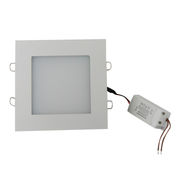

Why does this happen? Inside your LED bulb, there are dozens of individual LED emitters, or tiny "chips" that are mounted onto an electrical circuit. The two bulbs, despite having identical color temperature ratings, will appear very different due to this difference in hue. In color science, there is another axis of green-pink that also plays a role in determining a light source's color.īelieve it or not, two bulbs can have the same 3000K color temperature, but one can have a greenish cast, while the other has a pinkish cast. When we talk about color temperature, we only describe a light source with respect to its hue along a blue-yellow axis. 2) Your Bulb Lacks in Quality Control, Resulting in a Green or Pink Hue These are color temperatures that better resemble natural daylight, and typically provide a more balanced, neutral and crisp white color without the yellow/orange tinge that incandescent and halogen bulbs give off. For any tasks that require more visual acuity, we recommend a higher color temperature bulb, ranging from 4000K, or 5000K, and even as high as 6500K.

Now, on the other hand, if you're looking for lighting in an industrial or task-oriented setting, or your personal preference is for something "crisper," your problem may be that the low color temperatures are giving you too much of a yellow cast. If you want to retain that nice, warm and cozy ambiance, be sure to purchase a bulb with a color temperature of 3000K, 2700K, or even 2400K. Typically, the bulb itself will be marked with a 4-digit number, followed with the letter "K" to indicate the color temperature value.Īny color temperature higher than 3000K will be bluer and whiter than a traditional incandescent or halogen bulb. If you think your lights appear too harsh, blue, stark, or sterile, chances are high that the bulbs have too high of a color temperature. The emitted color will be similar to that of incandescent or halogen lighting, providing a nice, relaxing atmosphere that most (but not all) of us prefer in our homes. The addition of more options is a generally a good thing, but this means that you may have purchased a bulb with a color temperature that is not a good fit for your needs.įor example, for a typical residential application, you will most likely want to choose a light bulb with a color temperature of 2700K or 3000K. Now, with fluorescent lamps and LED bulbs, other colors and color temperatures are freely available. In the past, you simply could not go wrong, because consumers only had one choice.

Incandescent bulbs are not available in color temperatures higher than 3000K, simply due to mechanism behind how the filament emits light. Below, we've compiled a list of the 5 most common reasons that we have found our customers are unhappy with their existing lighting. If you're struggling with your lighting, you've come to the right place! As specialists in LED light quality, we've become very familiar with many of the pitfalls that our customers face when looking for LED lights.

With LED bulbs being the dominant technology today, not only do you have to make sure your LED bulb is mechanically and electrically compatible, you also have to know the difference between various CCT, CRI and brightness specifications. With the proliferation of energy-efficient lighting, consumers are faced with a daunting list of specifications to choose from. If you've ever wondered why your lighting just doesn't look good, you're not alone.


 0 kommentar(er)
0 kommentar(er)
